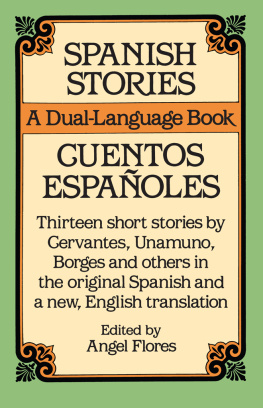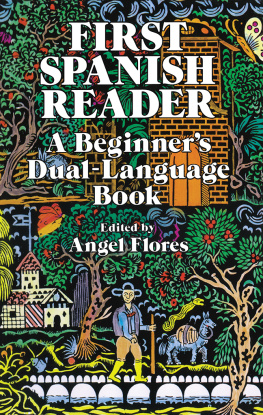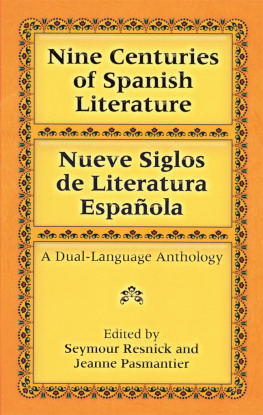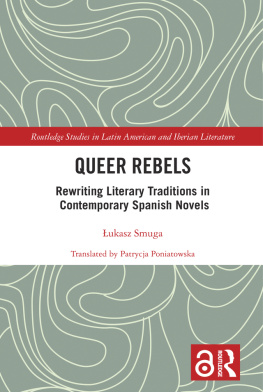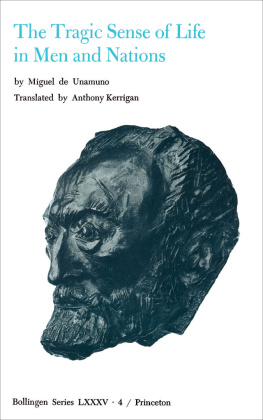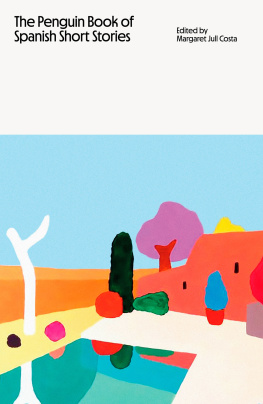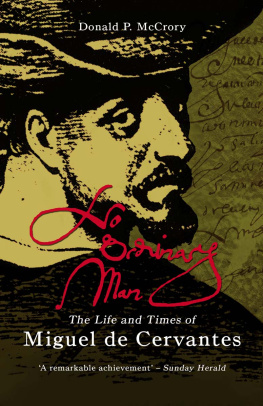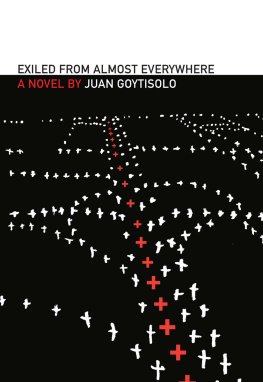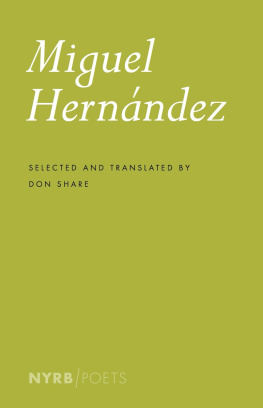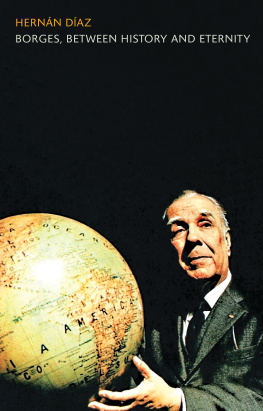SPANISH STORIES/
CUENTOS ESPAOLES
A DUAL-LANGUAGE BOOK
Edited by
Angel Flores
Stories in the Original Spanish
with New English Translations
DOVER PUBLICATIONS, INC.
NEW YORK
Copyright 1960 by Bantam Books, Inc.
Copyright 1987 by Dover Publications, Inc.
All rights reserved.
This Dover edition, first published in 1987, is an unabridged, slightly corrected republication of the twenty-first printing (1981) of the text originally published by Bantam Books, Inc., in 1960 under the title Spanish Stories/Cuentos Espaoles: A Bantam Dual-Language Book. The Publishers Note is new, replacing the one in the original edition although adapted from it.
Library of Congress Cataloging-in-Publication Data
Spanish stories = Cuentos espaoles.
(A Dual-language book)
1. Short stories, SpanishTranslations into English. 2. Short stories, EnglishTranslations from Spanish. I. Flores, Angel, 1900 . II. Title. III. Title: Cuentos espaoles. IV. Series.
PC4117.S657 1987 863.0108 87-606
ISBN-13: 978-0-486-25399-2
ISBN-10: 0-486-25399-6
Manufactured in the United States by Courier Corporation
25399619
www.doverpublications.com
ACKNOWLEDGMENTS
My former pupil, the gifted linguist and translator William M. Davis, has helped me untiringly, providing new translations of Lazarillo de Tormes, Conde Lucanor and La fuerza de la sangre, checking the notes and vocabulary, and advising on many and sundry problems.
Kate Flores helped with the bio-critical sketches, applying to them her genius for conciseness and precision.
Anthony Bonner and Donald Reis have also given kind and expert assistance.
I am grateful to Mara de Unamuno for permission to include the Spanish text of her fathers El Marqus de Lumbra, and to Albert Boni, who with characteristic generosity permitted me to reprint my English translation of it, originally published in Miguel de Unamunos Three Exemplary Novels and a Prologue, 1930 by A. & C. Boni.
Jorge Luis Borges, Camilo Jos Cela, Juan Goytisolo and Guillermo de Torre were most friendly and cooperative.
PUBLISHERS NOTE
Choosing the Spanish short stories included in this book was a challenge not only because of the great range and variety of fine works in this genre, but also because of pedagogical considerations. Decisions were based on the length, level of difficulty and familiarity. Whenever possible, pieces were chosen which have not been constantly anthologized although they represent the author well and possess the power, beauty and artistic merit of the more well-known ones. Such selections offer an opportunity to explore fresh territory for aesthetic enjoyment. The volume includes the first American translations of the Borges, Cela and Goytisolo stories.
Dual-language books such as this one eliminate the tedious task of flipping back and forth from the text to the vocabulary at the back, as is the case with more traditional readers. This allows the user both to absorb more vocabulary with greater understanding because he sees the words in context, and to recognize at a glance the syntactical and structural differences between the two languages. The notes cover special idioms and other difficulties, as well as background material.
Although this book is perfectly adapted to self-study purposes (and is ideal for comparative literature students and those unable to pursue Spanish seriously but desirous of reading masterworks in the original), a few classroom aids are also included: a vocabulary of words probably not familiar to first-year Spanish students, and a questionnaire on the stories to help stimulate thought and to guide both teacher and student into interesting discussion.
CONTENTS
FOREWORD
I N THIS small book are reflected a few crucial stages in the development of Spanish style and particularly of short story writing. No European country produced prose fiction in the vernacular as early as Spain. This may be attributed principally to the impact of the Arabs, who occupied the country from the early eighth century to the late fifteenth, and whose immense treasury of tales (The Arabian Nights, etc.) and love for storytelling were imparted to their conquered people. Or then again it may have been because the other European countries preferred their narratives in verse, relegating the use of prose largely to historical and theological writing.
In any event, fourteenth-century Spain already had a Conde Lucanor which, though envisioned as a handbook of practical ethics, was in essence an anthology of short stories. The apologues, fables, historical anecdotes, tales and myths in Conde Lucanor provided the cases, illustrations or, as the author preferred to call them, examples, full of human interest, from which he abstracted his moral instruction. In short, Don Juan Manuel from his palace was doing what the priests were doing from the pulpit: putting across their message by dramatizing mans existence. Don Juan Manuel invented little, perhaps, but he did transmit the cultural heritage of Moors and Christians as well as much of the anonymous world of folklore. One of these folkloric gems is the story about the taming of the shrew, here included, which Shakespeare was to rediscover years later, though not perhaps directly from Conde Lucanor.
The preoccupation with daily struggles, with moral values and behavior, seems to be a constant in Spanish writing. The Spaniards are forever anxious to learn more and more about the trials and tribulations of the man of flesh and blood, el hombre de carne y hueso, to use Unamunos favorite expression. The picaresque novel, from its inception with Lazarillo de Tormes (1554)and here are included the two finest chapters of the four or five which constitute this brief masterpiecewas focused upon the individuals journey through life. The anonymous author of Lazarillo was especially concerned with the hard knocks a man had to endure during his apprenticeship in order to face the cold, cruel and grim social reality which seemed so intent on preventing his survival. In those picaresque novels the villain was social reality, perverting the hero, lowering his status, crushing him under foot. That is why Lazarillo seems to be an anti-hero: he is no model for the reader, no great exemplar of Christian virtuesyet the author gives enough of Lazarillos background, of his mentors and masters, to make it clear that the little sinner from Tormes was not entirely to blame.
Another great exponent of examples was Cervantes. One of his most revealing works was his Exemplary Novels, from which The Power of the Blood, included here, is taken. In this story the evil-doings of the villain become virtuous actions as he evolves, through the power of the blood, into a hero. In Cervantes hands Spanish style has changed from the rudimentary plainness and navet of Don Juan Manuel and the piquant journalism of the anonymous author of Lazarillo to a complex afflatus, full of baroque resonances and circumlocutions.
The baroque outlasted the Golden Age, entering the eighteenth century via the very ripe Caldern and the mellowed Gracin. The late eighteenth century, however, saw a reaction to this Counter-Reformation prose, a reaction partly due to the strong influence of the French neoclassicists and, later, of the Encyclopedists. As was to be expected, the eighteenth century cultivated primarily the essay, its signal contributions being in the field of historical research and the humanities.
As a result of Romanticism and later of Realism, the nineteenth century witnessed a re-awakening of interest in storytelling. Readability was also stressed, since now there existed an extremely large and constantly expanding group of newspaper readers who wanted to be amused. The cultivators of the short story who appeared then were numerous and became consummate masters of the craft. It is true that some of the most gifted Romantics preferred to tell their stories in verse (Espronceda, Duque de Rivas), but the majority of them finally turned to prose, a tendency which became overwhelming as soon as the first glimmers of Realism were seen. During this transition the folkloric accent, reeking with local color (
Next page
